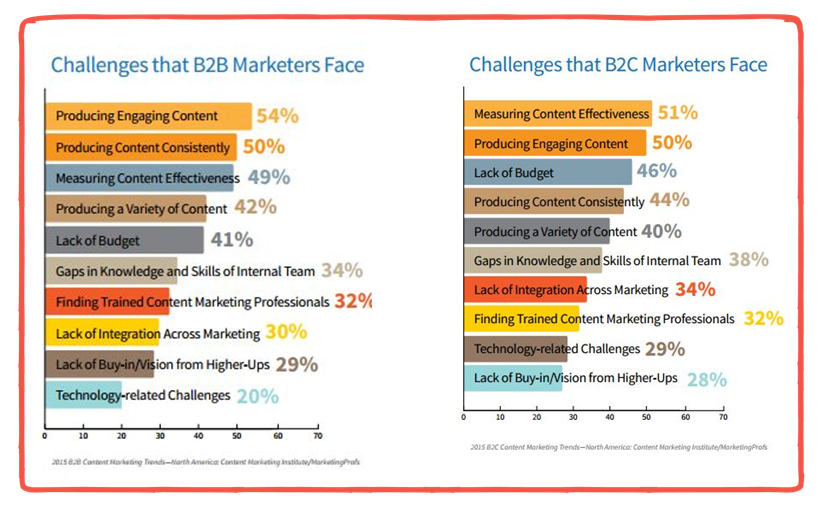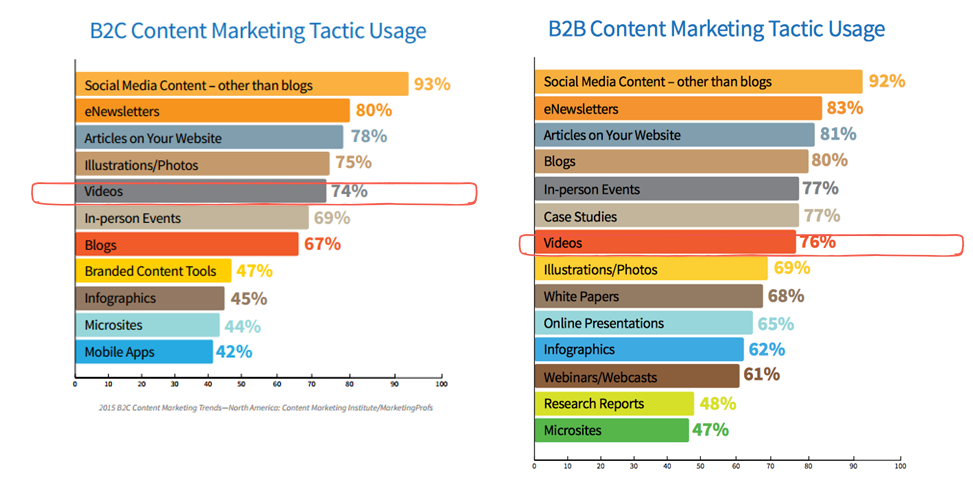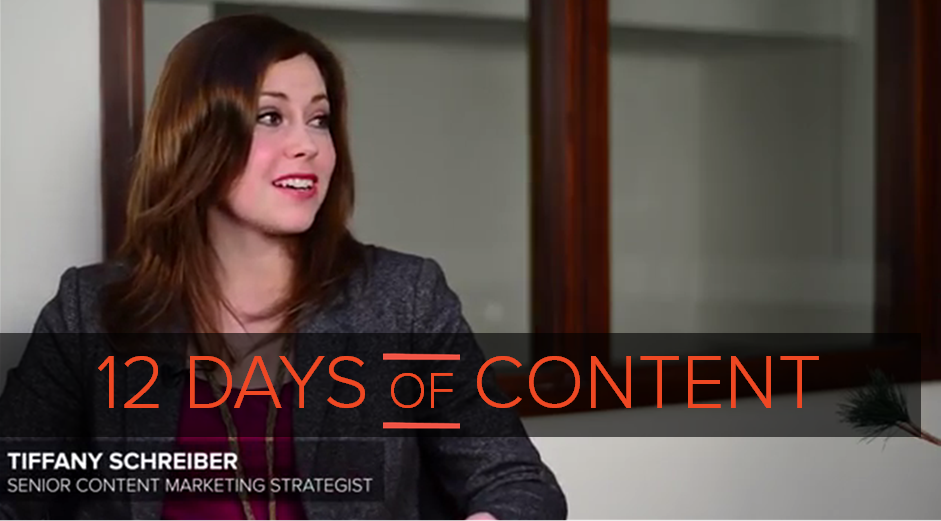How entertaining is your web content? Do you know how to measure if your audience likes what you share? Or if entertainment value is even benefitting your bottom line? In today’s landscape, you need to have answers to these questions or you’ll fall behind competitors.
On the seventh day of our 12 Days of Content series, we asked Senior Content Marketing Strategist Tiffany Schreiber to talk about how she helps clients build content strategies that both educate and entertain their audiences. Play the video to watch her interview, and read on for more insights.
Producing engaging content is a top pain point for marketers
Marketers know entertainment and engagement are top priorities but still struggle to master those efforts. In this year’s Benchmarks, Budgets and Trends report from the Content Marketing Institute, both B2Bs and B2Cs listed “producing engaging content” at the top of their list of challenges.

Why is this challenge so prevalent? Tech-savvy consumers know they have purchasing power and choose to get information from and ultimately patronize brands that make interactions enjoyable.
“It’s how you connect with people,” said Tiffany. “It’s important to entertain them, and that should be part of every marketer’s focus. In traditional marketing, people were very product focused. You explained how to buy something, what the price was. But consumers are more intelligent. They do their research and want to feel connected to the brands they give their money to.”
Entertainment and engagement are measurable
According to Tiffany, you can measure how entertaining your content is by looking at three metrics in particular:
- The rate of returning visitors
If you’re entertaining people, they will be coming back.
- Your top articles over time
If people find your content entertaining and useful, those articles should continue to outperform other pieces on your site.
- Social engagement metrics
If people really like those articles, you’re going to see Shares, Comments and Likes/Favorites on social media because people will want their friends and colleagues to see them as well.
Even ‘boring’ industries need to be entertaining
Even if you’re not a retailer trying to reach Millennials, you can and should be entertaining your visitors in a way that’s relevant to them.
“Look at your target audience – if you don’t have personas, create them. Research your buyers. Make them feel special. What are their interests, goals and objectives? If you can speak to those things, and tie in your product in a subtle way – that’s how you create loyalty and drive sales,” explained Tiffany.
The internet isn’t just text and links anymore, and companies have realized they can’t compete if their online experiences are lackluster.
For example, we created blog content for a unified communications company around a pop culture topic that was a hit (and resonated with its readers): Batman*.
*Yours might not be Batman, but there’s another topic that’s right for your audience
Visuals are one way to up the engagement of marketing content that might feel ‘safer’. The internet isn’t just text and links anymore, and companies have realized they can’t compete if their online experiences are lackluster. Patrons are looking for information about brands online, and they expect interaction on the ‘net to mirror what they’d encounter in a physical store.
Go to Starbucks.com. It looks and sounds a lot like the messages you find in the brand’s brick-and-mortar locations. Savvy marketers are similarly crafting web experiences that capture the culture they offer customers … and that starts with every piece of content, visual or written, they produce.
The Content Marketing Institute reported that infographics are the fastest rising content format, and videos aren’t far behind. Visual content is a seamless way to communicate brand identity and inject personality or humor without coming across as unprofessional.
The power of personal connections
What marketing messages do you remember? The ones that tell a good story and that you connect with on a personal level. A study by Siegel and Gale demonstrated the importance of relating to customers. Even B2Bs targeting professional buyers have 31 percent higher revenue growth and 27 percent stronger stock value.
Here are some examples of how companies in different verticals are achieving this with their content:
2 Brands telling great stories with web content (& seeing results)
Businesses need to stop thinking about whether they’re business-to-business or business-to-consumer and start thinking about how they can be person-to-person. It will help them reach their web marketing goals of organic traffic growth and lead generation, but also improve their bottom line.
For more on how to create content that entertains and supports your goals:
- Check out this success story about Lifestyle content that gets more traffic
- Get in touch with a member of our team



